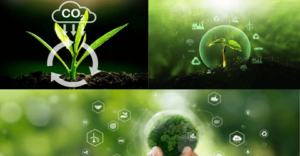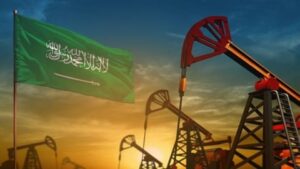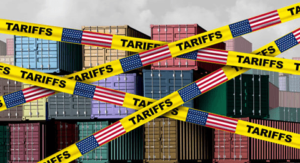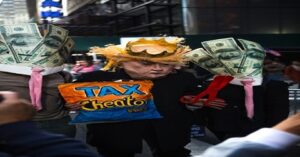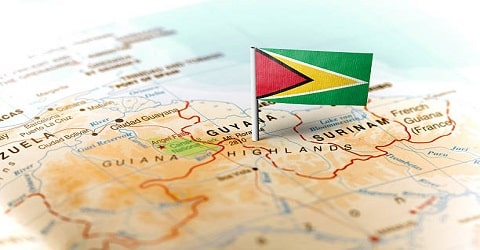
Guyana's Sustainable Economic Model is Transforming Latin America
Guyana’s sustainable economic model heralds a paradigm shift in Latin America and the Caribbean, poised to transform its socioeconomic scenery. Boasting the world’s fastest-growing economy and leveraging vast oil reserves, Guyana pioneers a unique approach under President Irfaan Ali’s leadership. By channeling fossil-fuel windfalls into poverty alleviation and clean-energy initiatives, the nation charts a path towards sustainable development.
With a commitment to environmental conservation and green growth, Guyana emerges as a beacon for ESG investments and climate resilience. As it navigates economic hurdles and geopolitical challenges, Guyana’s model offers a blueprint for inclusive prosperity and environmental stewardship, inspiring nations worldwide.
Guyana’s Sustainable Economic Model
Guyana stands at the precipice of a transformative journey, poised to redefine socioeconomic paradigms in Latin America and the Caribbean. With a population of around 800,000, this nation boasts the world’s fastest-growing economy, surpassing even giants like Mexico and Brazil in GDP per capita growth, according to the World Bank.
This remarkable feat is underpinned by the discovery of vast oil reserves, estimated at over 11 billion barrels, propelling Guyana into the echelons of major oil-producing nations.
However, alongside this oil boom, Guyana’s sustainable economic model has emerged as a crucial factor in ensuring long-term prosperity and stability, incorporating principles of environmental conservation, social equity, and inclusive growth.
Read More: Economic Impacts of Green Shipping Practices
Table of Contents
1. Economic Transformation and Oil Boom
Guyana is undergoing a remarkable socioeconomic shift, witnessing unprecedented economic growth, surpassing even major Latin American economies like Mexico and Brazil. Fueled by vast oil reserves estimated at over 11 billion barrels, Guyana’s GDP per capita soared by 62.5% in 2022 alone.
With the implementation of Guyana’s sustainable economic model, which focuses on responsible resource management and equitable distribution of wealth, the country is leveraging its newfound oil wealth for long-term prosperity.
By doubling its oil output and projected to produce over 800,000 barrels per day by 2025, Guyana is poised to become the world’s largest oil producer per capita, rivalling even countries like Kuwait.
2. Unique Approach to Oil Wealth
President Irfaan Ali’s administration is steering Guyana towards a distinctive path with its newfound oil riches. Rather than succumbing to the pitfalls of resource curse, Guyana aims to utilize its fossil fuel windfalls to combat poverty and expedite its transition towards clean energy. By investing heavily in renewable energy sources like hydro, solar, and wind power, the country seeks to lessen its reliance on hydrocarbons, decrease energy expenses, and attract investments in various sectors.
Guyana’s sustainable economic model prioritizes long-term prosperity by integrating its oil revenues into diversified sectors such as agriculture, infrastructure, and education, ensuring equitable growth and resilience against volatile commodity markets.
Read More: Food Security and Development in Africa
3. Social Development Goals and Environmental Conservation
Guyana’s government is prioritizing investments in education, healthcare, housing, water, and sanitation to achieve its social development objectives. Additionally, by integrating “Guyana’s sustainable economic model,” which emphasizes environmentally friendly practices and responsible resource management, the nation ensures that economic growth aligns with long-term environmental preservation goals.
More than 85% of its land covered by tropical forests and a significant portion owned by indigenous communities, Guyana stands out as a leader in environmental conservation. Initiatives like the low-carbon development strategy, development green hydrogen, and bolstered efforts under the current administration reinforce Guyana’s commitment to sustainability.
4. Accelerating Energy Transition and Green Growth
To reduce its reliance on hydrocarbons and foster green job creation, Guyana must expedite its energy transition and invest in conservation, sustainable housing, and clean transportation. Guyana’s sustainable economic model should be woven into these efforts to ensure long-term viability and equitable growth.
Leveraging its nature-positive status and ensuring that green projects in Guyana yield greater environmental benefits, the country can attract significant environmental, social, and governance (ESG) investments. Drawing inspiration from successful programs in Colombia and Mexico, Guyana aims to promote green growth and develop a comprehensive system of economic transfers.
Read More: Unlocking Amazon Conservation Beyond Bioeconomy: A Critical Examination
5. Economic Challenges and Immigration Policies
Despite its rapid development, Guyana faces significant economic hurdles, necessitating the adoption of immigration policies to attract the workforce needed for ongoing construction projects and the expansion of sectors like financial services and entrepreneurship.
Guyana’s sustainable economic model, emphasizing the responsible exploitation of its natural resources and investments in renewable energy and agriculture, will be pivotal in ensuring long-term prosperity. Achieving full employment and bolstering the middle class are crucial to preventing civil unrest and maintaining political stability.
6. Geopolitical Concerns and International Support
Guyana’s democracy is under threat from neighboring Venezuela’s claims over the oil-rich Essequibo region. However, steadfast support from allies like the United States and the United Kingdom, along with international solidarity, has helped neutralize these threats pending a resolution by the International Court of Justice.
Guyana’s effective leadership and commitment to leveraging hydrocarbon profits for socioeconomic advancement, exemplified by initiatives such as Guyana’s sustainable economic model, position it as a leading development model in Latin America and the Caribbean, offering valuable lessons for other resource-rich nations.
Read More: Climate-friendly Investments in Developing Countries: Challenges and Solutions
Bottom Line
Guyana’s socioeconomic metamorphosis epitomizes the convergence of visionary leadership, strategic resource management, and sustainable development imperatives. As it navigates the complexities of economic diversification and environmental stewardship, Guyana emerges not only as a beacon of hope for its citizens but also as a model for global emulation, reaffirming the transformative power of innovation and inclusive growth strategies.

